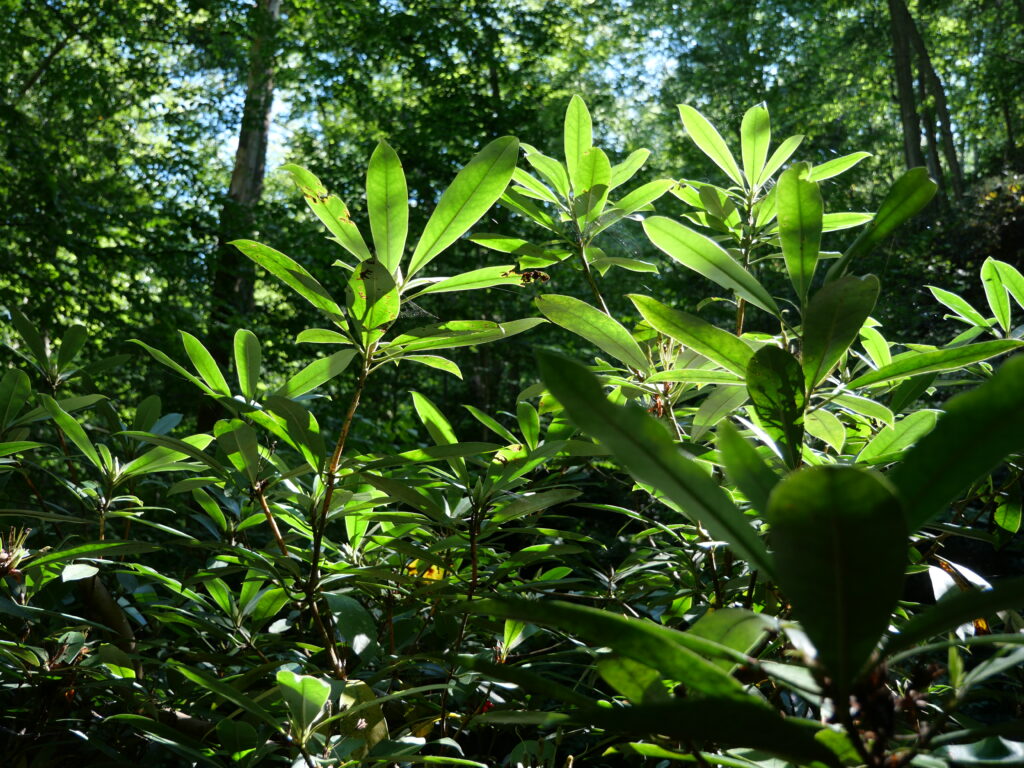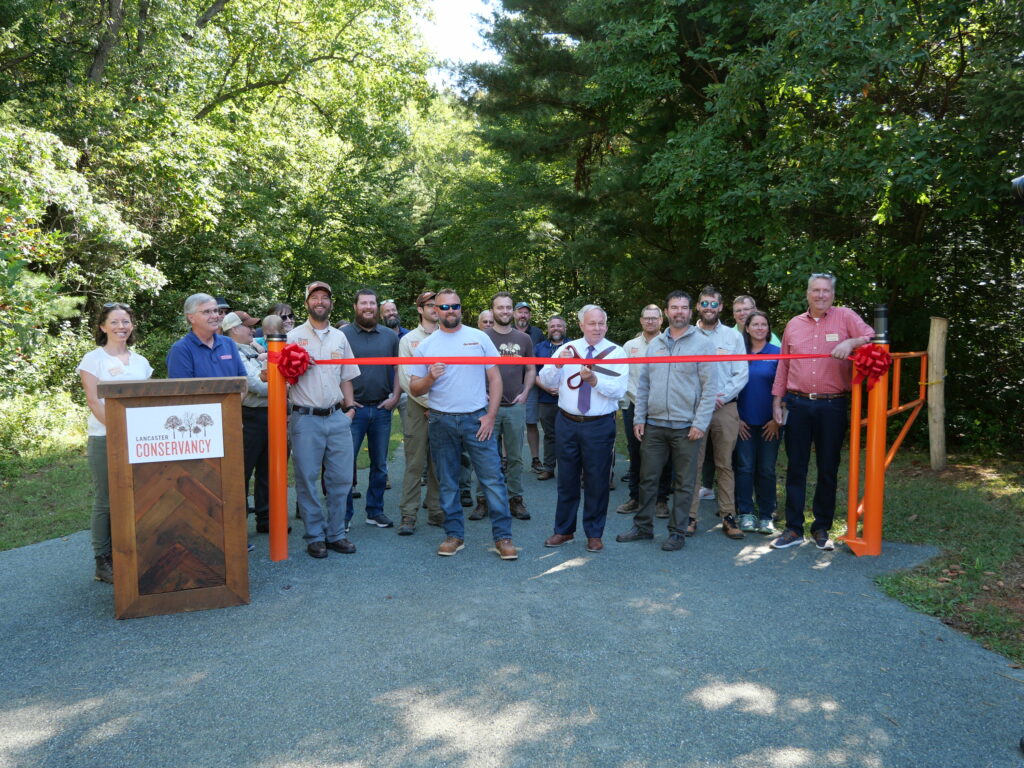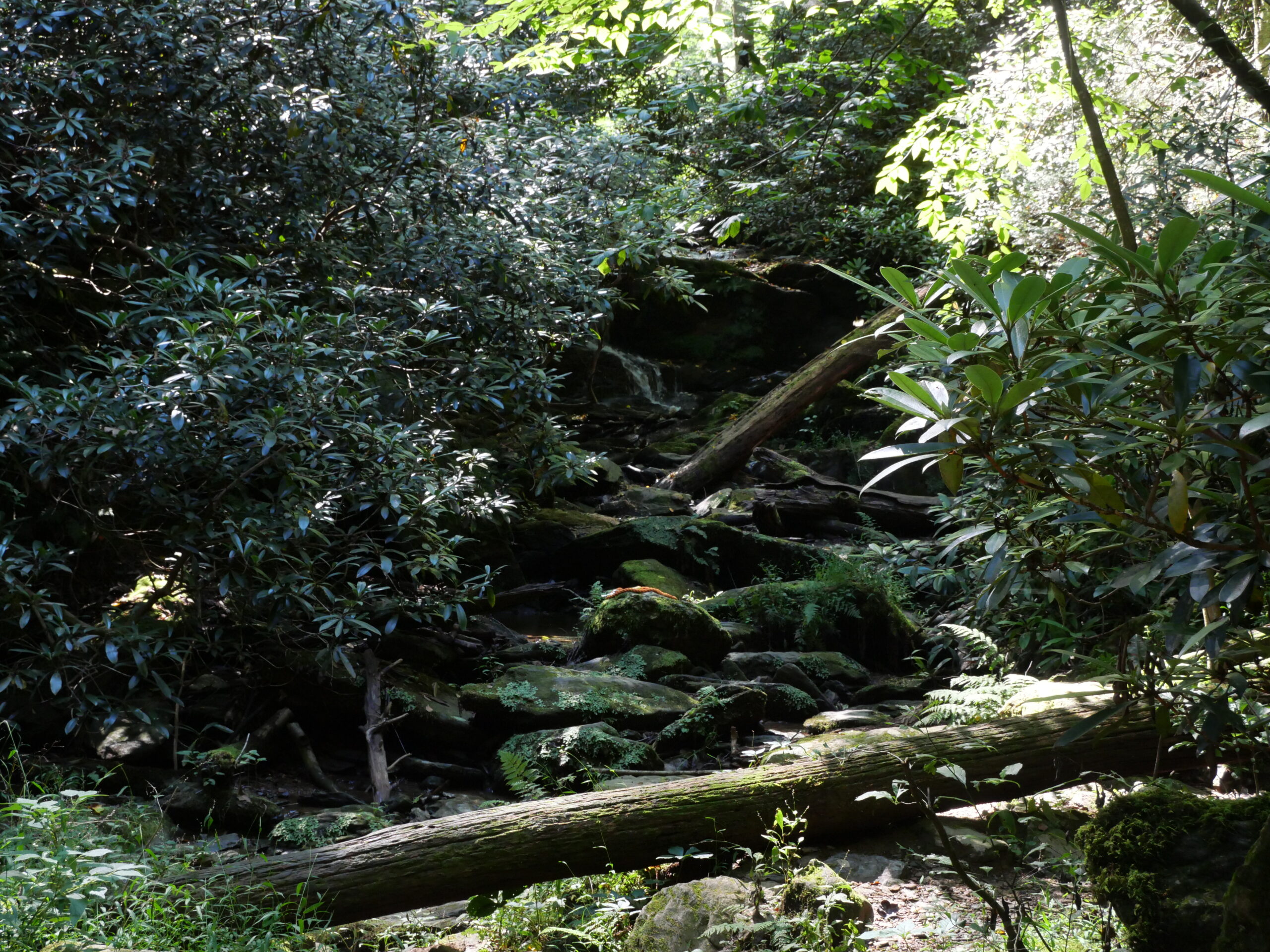By Keith Williams, Vice President of Engagement & Education
This spot on the Mason-Dixon Trail feels familiar and safe. Mill Creek flows past. It holds a lot of memories, but this special place was almost lost. I remember standing at this spot with my young children as we hiked the Mason-Dixon Trail, looking at that green blazed trail across the creek that headed off into the thick rhododendron glen and wondering where it went. Prominent yellow posted signs stapled to trees always got in the way. The big difference now is that it’s protected forever and open to the public, the no-trespassing signs are gone, and my kids are grown, one with her own child.
This place almost disappeared. The tract was almost developed. It was a retreat center at the time, and when it went on the market, a developer was very motivated to put numerous tiny/mobile homes on it. The Lancaster Conservancy Board allowed the organization’s leadership to get into a bidding war with developers to purchase this land so that it could be protected from development forever. A gutsy and risky move for a determined nonprofit, an act that has brought us to this moment.
→ TRAILS NOW OPEN AT MILL CREEK FALLS NATURE PRESERVE
I step across Mill Creek on schist bedrock slabs slick with algae and water and take my first steps on the new preserve. Rhododendrons tower overhead. One late season white bloom is visited by a bumble bee. A thin veil of water sheets off a schist ledge and drops 10 feet to form Mill Creek Falls. This rhododendron stand is old, ancient maybe, and the soil beneath the twisted ropy stems is soft and spongy. The rhododendrons block all the light and absorb all the sound that originates beyond the glen, and the universe here is reduced to shaded verdant green, the smell of damp leaf mold, and the sound of falling water muffled and reverberated at the same time by millions of thick leathery rhododendron paddle leaves. Deep pockets like this have probably gone untouched by modern humans, at least directly, and I feel the time this spot stores. I’m reminded of how close we came to losing this timelessness.
The geologic complexion started 575 million years ago when a rift event, where plate tectonics separate continents, formed the Octoraro Sea. Shiny flecks of the silicate mineral mica, so characteristic of the Susquehanna Riverlands, also started here. Sediments from the eroding continent settled to the bottom of the sea where they were compressed over millions of years to form shale. The shale was heated and compressed over millions more years, to form the metamorphic rock schist, which persists today as the defining backbone to all these glens. Streams carve through the schist incrementally over eons, imperceptibly wearing away rock from our human perspective, converting it back to sediment, sending the rock back to its origins. The exposed schist and sparkly mica make deep time – a time scale of geologic events so vastly expanded from our metric of a human lifetime – tangible and palpable here.

Mill Creek Falls Nature Preserve (Photo by Avery Van Etten)
The ecology responds with ancient rhododendron glens and hemlock forests. These old rhododendrons may be 100, and the stand may be 10,000 years old when the last glacial period ended. While this area was never glaciated, the ice was close enough to significantly influence it, and the landscape was part tundra, with scattered stands of spruce and fir and, probably, rhododendrons.
This rhododendron stand was likely here in the 1600s at first European contact. Since they can reproduce clonally these may be the same individuals genetically who were here in the 1600s. What did these beings experience? The encroachment of Europeans to the detriment of Native peoples? Clearcutting? Certainly, these rhododendrons saw the development of an 1800s ecotourism industry where hotels sprang up near these beautiful places, filled with people brought to them by railroads from area cities.
If the imprint of man was here, nature absorbed most of it and reverted it back to wild. I can barely make out evidence of an old logging road.
Mill Creek Falls is very different now from what it was 10,000 or 1,000 or even 200 years ago, but that doesn’t reduce the magic of this place, the spiritual feel, or the enduring recognition that I am some insignificant part of this much greater whole. Insignificant, yet my actions really do matter. The actions of the Conservancy matter, too, and the spiritual feel of this place would have been lost had a housing development appeared.

Mill Creek Falls Nature Preserve ribbon cutting (Photo by Avery Van Etten)
The Conservancy’s Land Protection team has moved onto the next acquisition. The Stewardship team has finished installing trails, kiosks, and parking lots here, for now. They will always have a presence here doing maintenance, but the bulk of their work to open the preserve is done – here, at least.
Protecting this place is about so much more than preserving a view, so much more than safeguarding acres that can be bought and sold. Preserving Mill Creek Falls Nature Preserve protects the timeless feeling and connection to our collective past. In this singularity of time at the intersection of eons-old geology, ancient biology, and gutsy modern conservation – I will enjoy this moment.

